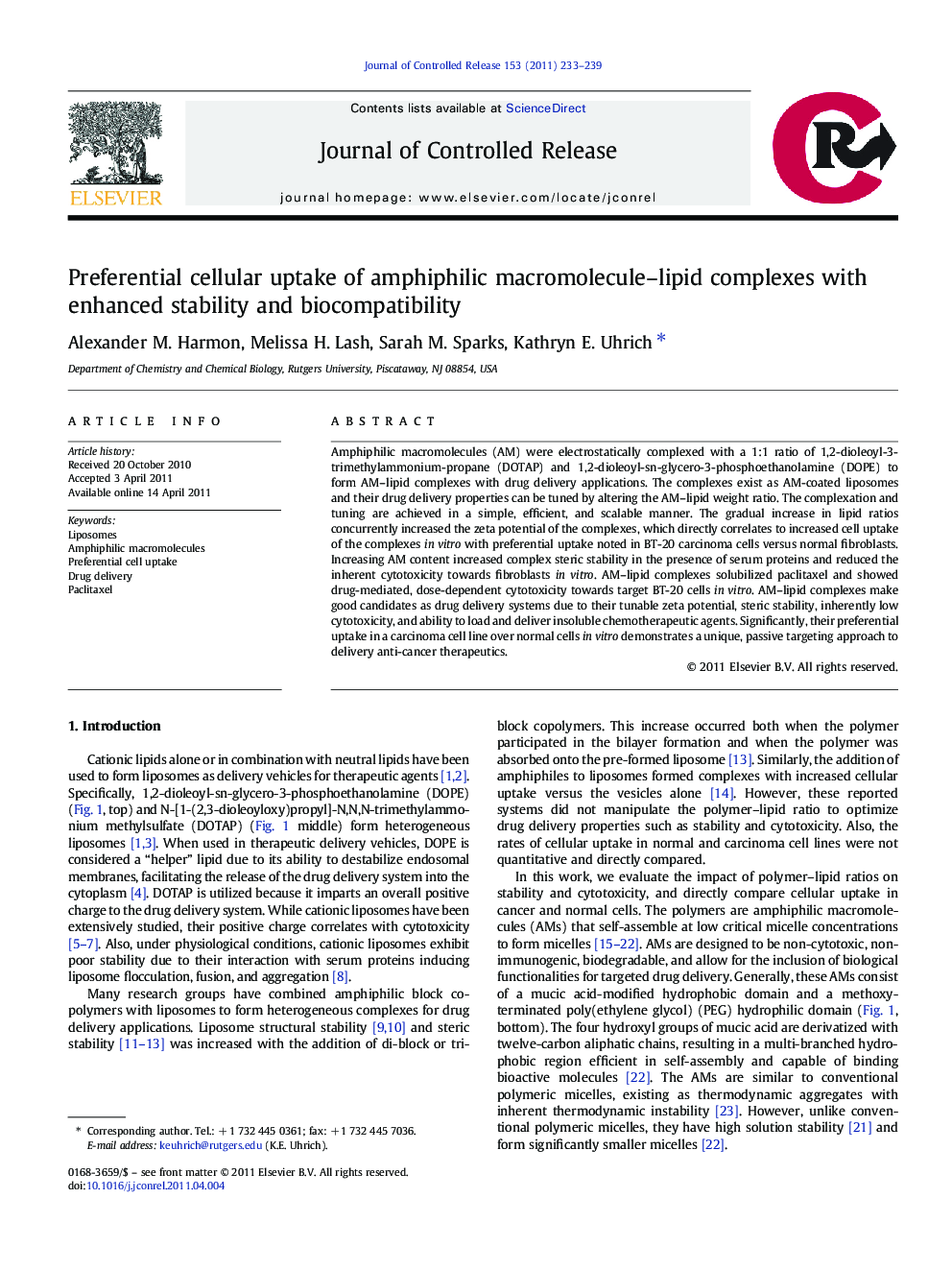| Article ID | Journal | Published Year | Pages | File Type |
|---|---|---|---|---|
| 1424978 | Journal of Controlled Release | 2011 | 7 Pages |
Amphiphilic macromolecules (AM) were electrostatically complexed with a 1:1 ratio of 1,2-dioleoyl-3-trimethylammonium-propane (DOTAP) and 1,2-dioleoyl-sn-glycero-3-phosphoethanolamine (DOPE) to form AM–lipid complexes with drug delivery applications. The complexes exist as AM-coated liposomes and their drug delivery properties can be tuned by altering the AM–lipid weight ratio. The complexation and tuning are achieved in a simple, efficient, and scalable manner. The gradual increase in lipid ratios concurrently increased the zeta potential of the complexes, which directly correlates to increased cell uptake of the complexes in vitro with preferential uptake noted in BT-20 carcinoma cells versus normal fibroblasts. Increasing AM content increased complex steric stability in the presence of serum proteins and reduced the inherent cytotoxicity towards fibroblasts in vitro. AM–lipid complexes solubilized paclitaxel and showed drug-mediated, dose-dependent cytotoxicity towards target BT-20 cells in vitro. AM–lipid complexes make good candidates as drug delivery systems due to their tunable zeta potential, steric stability, inherently low cytotoxicity, and ability to load and deliver insoluble chemotherapeutic agents. Significantly, their preferential uptake in a carcinoma cell line over normal cells in vitro demonstrates a unique, passive targeting approach to delivery anti-cancer therapeutics.
Graphical abstractAM–lipid complex drug delivery systems exhibit adjustable zeta potential and cellular uptake with increased uptake in carcinoma versus normal cells, steric stability, low cytotoxicity, and ability to load and deliver insoluble chemotherapeutic agents.Figure optionsDownload full-size imageDownload as PowerPoint slide
